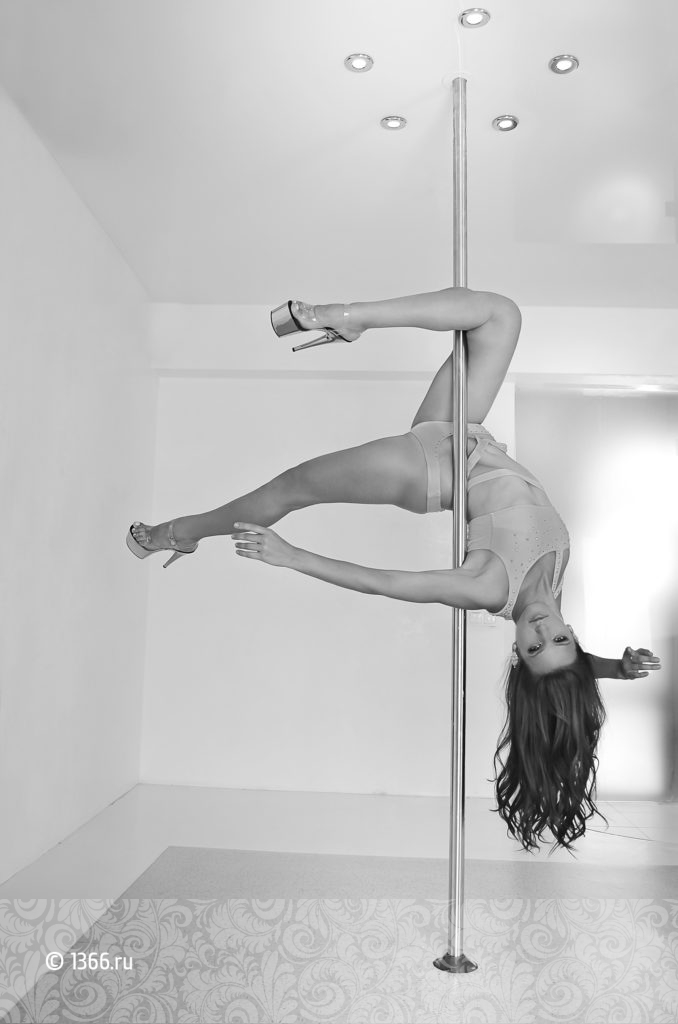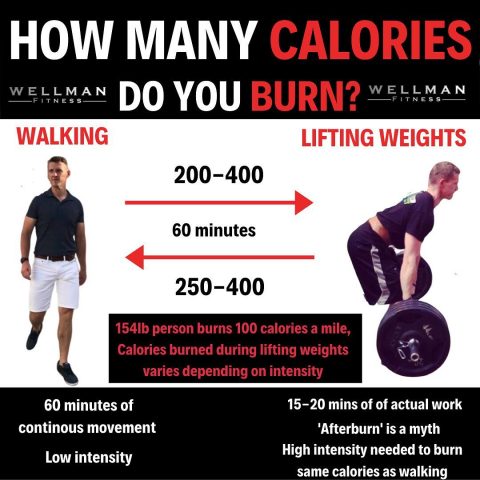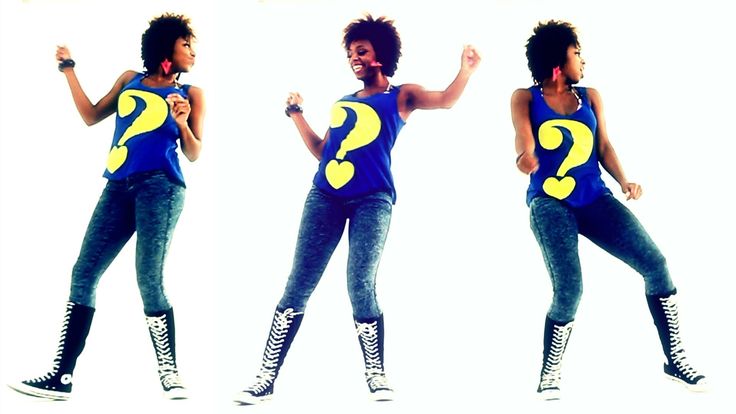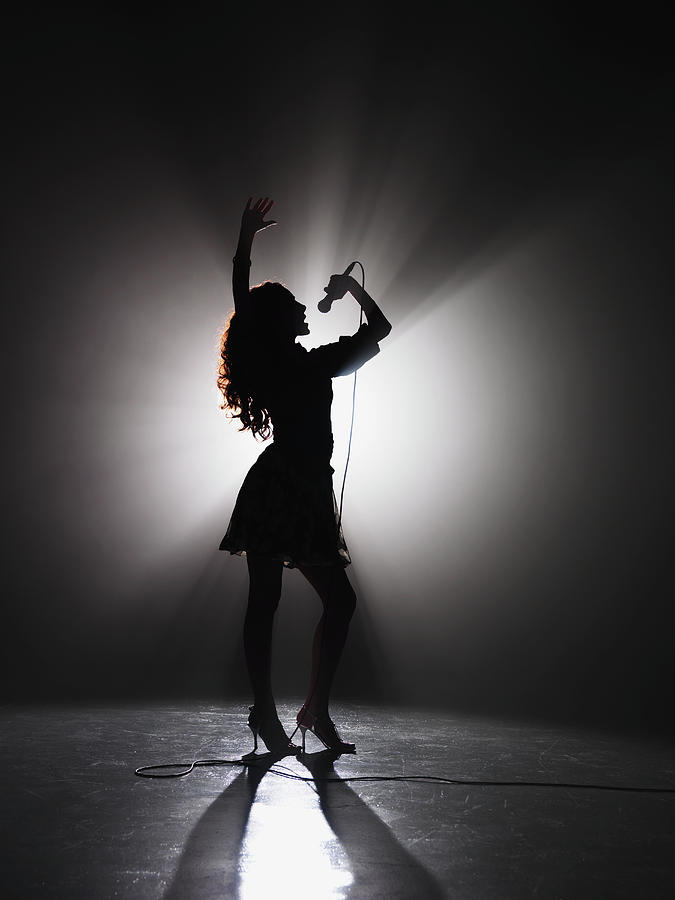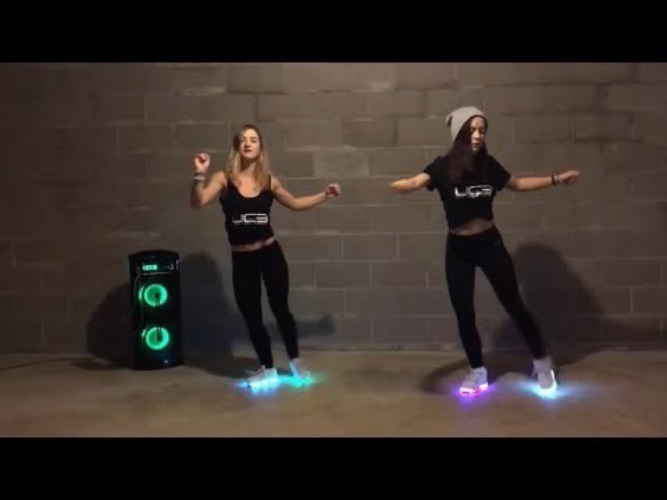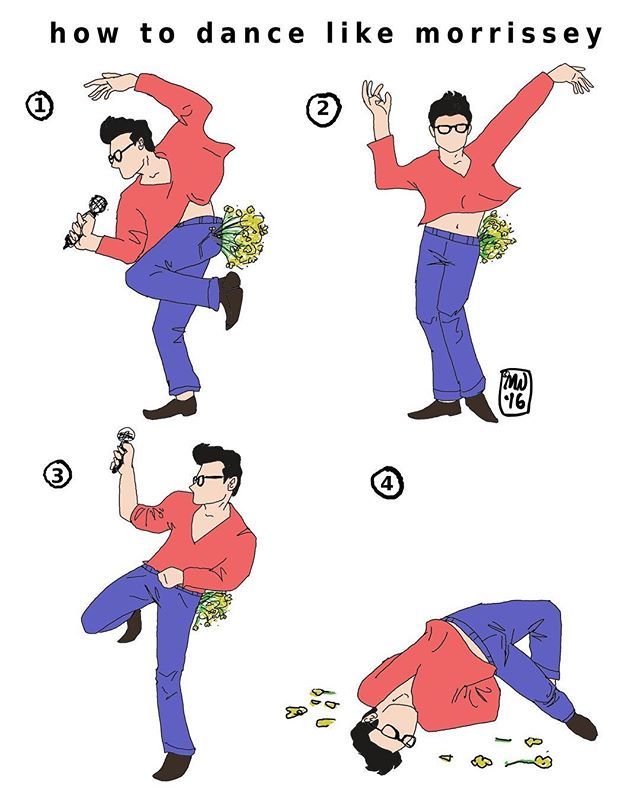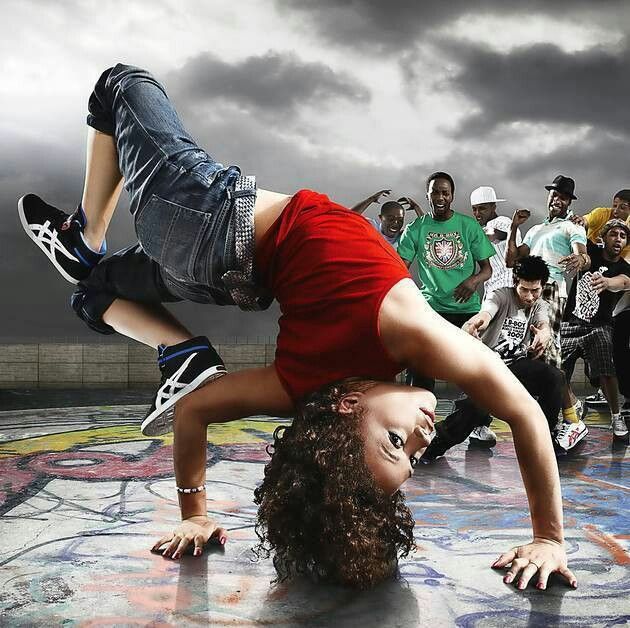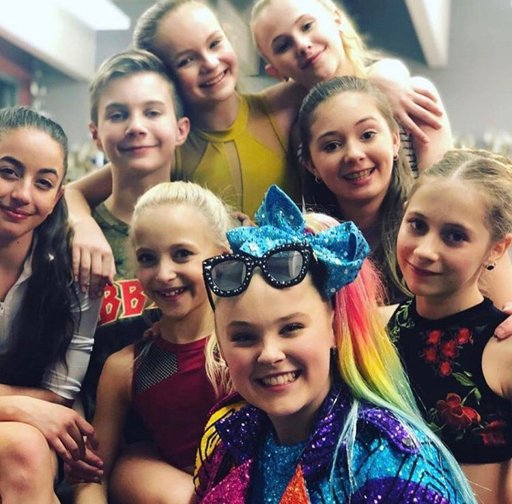How do pole dancers not get burned
Prevent Pole Burn Pain & Bruising On The Skin While Pole Dancing
by Danna | Feb 5, 2016 | 2 comments
(Last Updated On: September 2, 2022)
One unspoken aspect of pole dancing is the stinging sensation on the inner sides of the skin known as “pole burn”. This is especially common for beginners on the inner thighs and on th inner upper part of the bicep. It’s essential to build the strength in the skin to reduce and eliminate pain and bruising to execute those cool pole tricks. If you are a beginner pole dancer and you have tried your very first pole sit then you know what I’m talking about – the “OW” factor in #polefitness. The reason nobody talks about it is that it’s painful.
Pole dancing is a beautiful sport and when we think about pole dancing to feel sexy or for fitness then we think pleasurable positive thoughts. Pole dancing for fitness as well as to have some “me time” to feel sexy are the best reasons to pole dance but regardless of your reasons, developing the strength in the skin to actually pole dance is a sharp reality to deal with.
When you start learning to pole dance and you do your first pole sit on the pole, the sensation of the pole between your thighs, tugging on your skin can feel less than pleasant. For those of you, who have never pole danced, please don’t let this scare you because it’s something we all go through and never regret going through. It’s just that every sport has its stressful points. The body has to adjust to the challenge of any sport no matter what you do and in the pole dancing world, your skin must adjust along with your muscular strength.
The very first time you do a pole move that requires you to grip the pole dancing pole with the inside of your thighs or inside of the bicep might cause you a little pain. Pain meaning you feel the pole tugging at your skin that causes a painful sensation.
There are sensitive nerves in your skin, especially in the sensitive areas like the groin, inner thighs, and inner biceps.
So how do you get rid of the pain and bruising from pole burn and strengthen the skin for a pain-free pole dance experience you might ask?
There are 3 main things you can do now and in the future to stop the pole burn;
Tip 1#: Practice.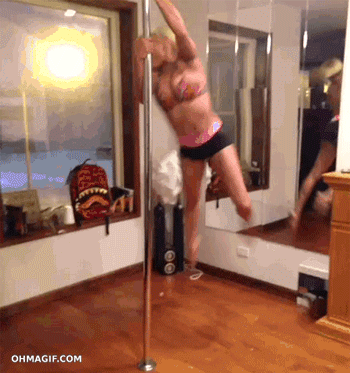 Those painful nerves will desensitize with time and practice.
Those painful nerves will desensitize with time and practice.
Nerves will desensitize with time and consistency. Practice your pole moves until your skin has had enough, even if it’s only 5 minutes. This time frame will be different for everybody. Then repeat at least 3 times a week. At about the 6-8 week mark, you will feel better and notice that you can do some pole sits pain-free.
There are some exercises you can do to deliberately challenge the strength of the skin and work to desensitize those nerves.
For beginners, doing scissor plank pole sits on the pole or down the pole (as shown in the picture to the left) will definitely help the inner thighs strengthen and desensitize. Here is a video tutorial on how to do the Plank Scissor Pole Move =>
You can do this by sitting on the pole in a pike position. The gently scissor the legs while rocking the hips from side to side. If the left leg is higher than the right in the scissor, then shift the hips to the right so the left inner thigh firmly presses against the pole, intensifying the grip.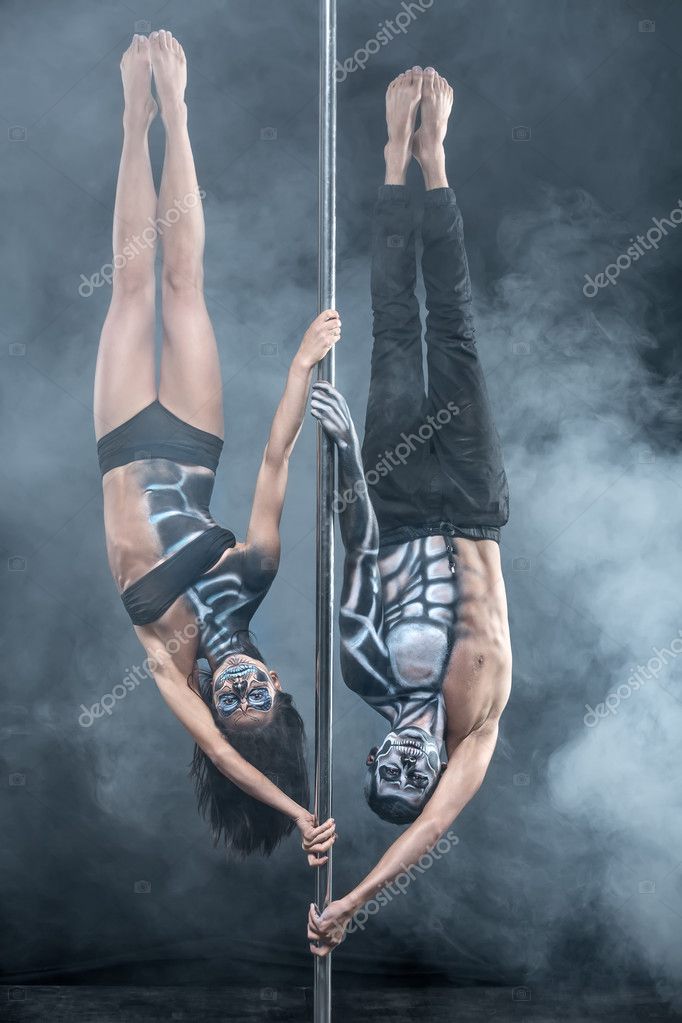
Then repeat this action by scissoring the legs so the right leg is high and shifting your weight into the left hip causing the pole to firmly press against the inner thigh of the right leg.
Repeat back and forth as many times as you can tolerate it. You will be able to do more repetitions with time.
To help desensitize the inner upper part of the arm, use this pole dance exercise (that is also a good ab workout as well) =>
Tip 2#: Don’t Over stress the skin and use the right gear to protect an existing pole burn
Remember, DON’T over stress you skin or cause excessive bruising by doing these exercises. When your skin has had enough, please use an inner thigh wrap with tacky grip and inner arm grip bands to protect your skin so you can keep pole dancing without losing any grip (in fact, you will have better grip with the wearable tacky grip gear).
When your skin has had enough stress during your daily pole routine, then move on to practicing other pole moves that don’t tug on the skin like the contemporary pole spin for intermediates (you must own the course to access the contemporary pole lesson >> PoleBody Complete Home Edition – Home Pole Dancing Lessons For Everyday Women).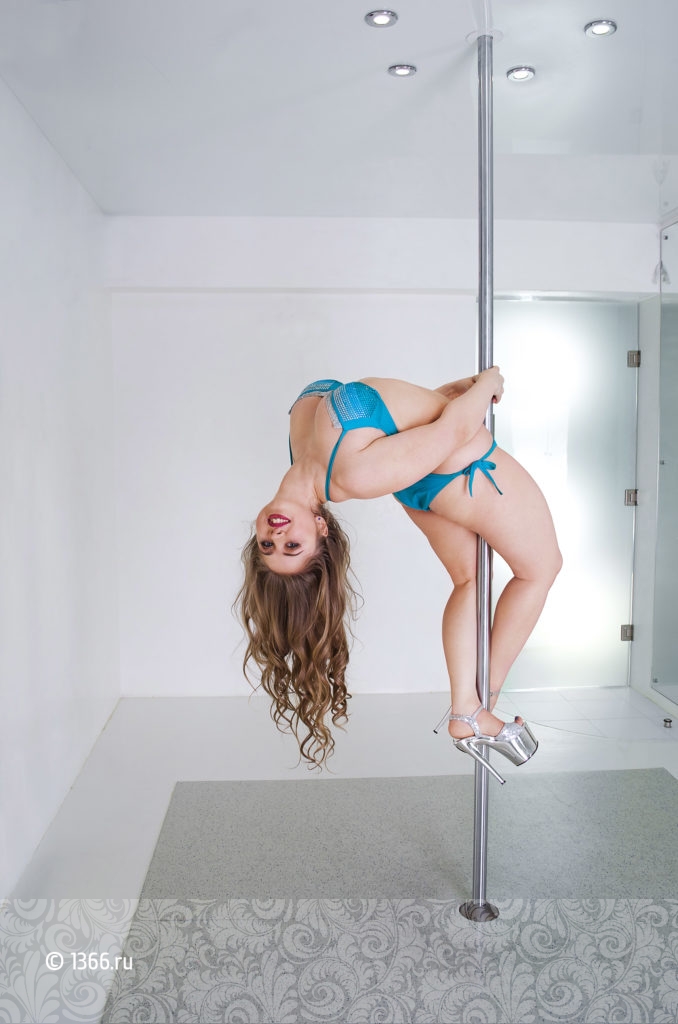
It’s important to remember to use the tacky grip gear as an AID not a CRUTCH. You must learn to desensitize your skin and that won’t ever happen if you don’t attempt to dance with bare skin first. The grip gear is to protect the skin from excessive pain, bruising, and other damage so you can dance longer.
Tip 3#: Find Your Sweet Spot for The BEST Grip & Avoid Sweaty Skin
Sweat on the skin can cause you to have more friction between you and pole and increase your chances of getting a nasty pole burn. There are pole dancing grip aids for sweaty hands and bodies that are also an antiperspirant. This prevents excessive sweaty and reduces friction on the pole while dancing.
Trending
Is It Safe To Install A Pole In Your Home?
To find that “SWEET SPOT” when you have ultimate grip and the least amount of pole burn would be when your skin is at that phase where you are just about to sweat – not full-on sweaty.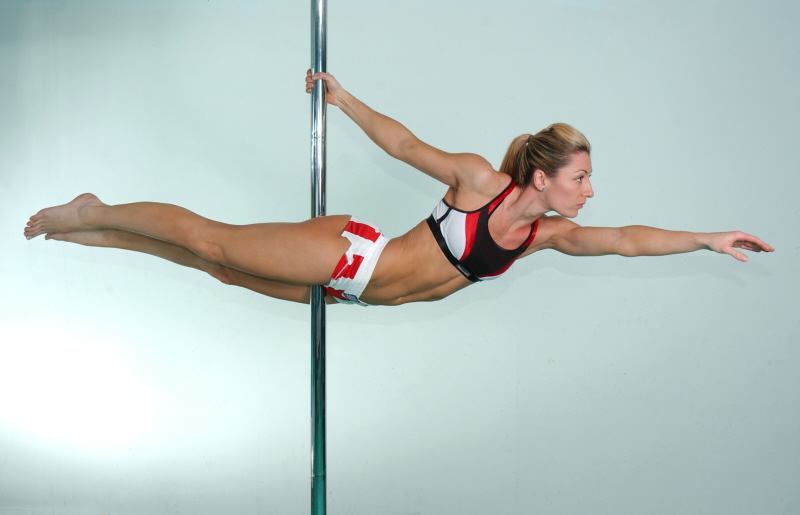 This point happens when the skin is warmer than normal body temperature and slightly dewy without sweating. Reaching this sweet spot will be different for everybody because we all live in different environments, have different skin types, and possibly dance on a dance pole with various finish types.
This point happens when the skin is warmer than normal body temperature and slightly dewy without sweating. Reaching this sweet spot will be different for everybody because we all live in different environments, have different skin types, and possibly dance on a dance pole with various finish types.
Experimentation with different grips to find the right grip aid that works for you is important to preventing excessive pole burn.
You can get a step by step videos of the best skin desensitizing moves for your skin for beginners in the Home Pole Lessons For Everyday Women Course.
Above all, please remember to hang in there and keep trying. Nothing worth having is super easy.
How to Prevent Pole Burn in Pole Dancing
by Masha
If you have been using a dance pole for a long time, then you know the pain that comes with its continued use.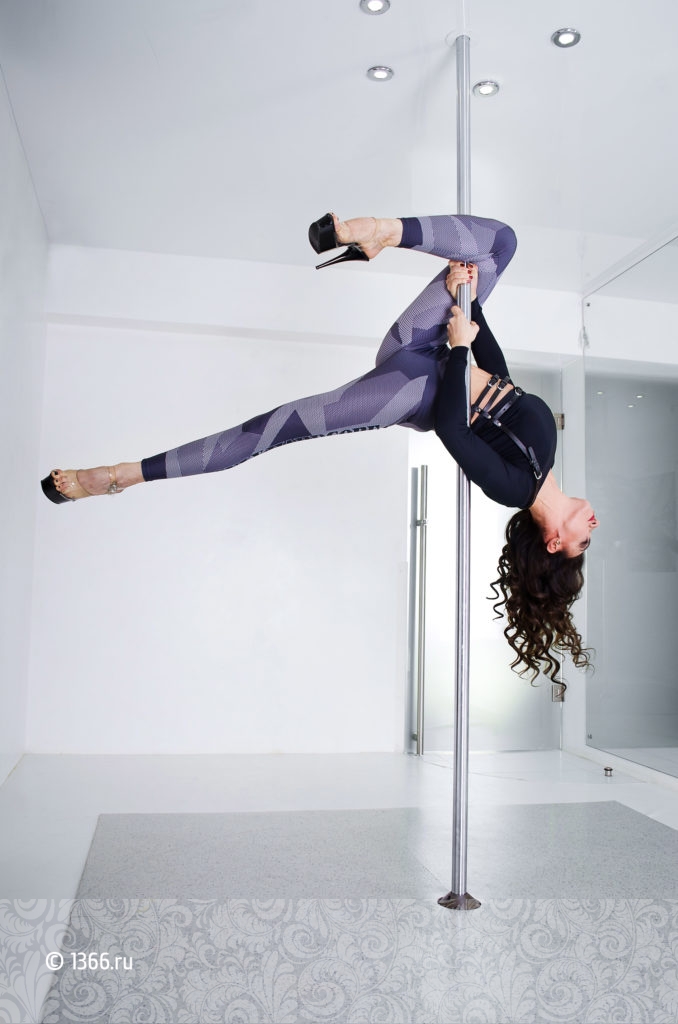
If you regularly use and handle the pole, you will end up with a burning and painful sensation, and you probably know what I am talking about.
This can be painful, annoying, and very inconvenient when your training and the worst thing is it can happen anytime if you train regularly.
Sounds painful and scary, right?
Here is how to Prevent Pole Burn in Pole Dancing
Read the whole article, you will discover a lot of new things about pole burn.
By understanding the pain and its cause, then it’s possible to reduce the pain in the future.
There have been a number of questions posted about pole burn and how to stop it.
There are a number of pole dancers out there who have the same questions, but can’t seem to get the answers they seek.
One of the questions I received while teaching one of my new pole dancing beginner classes is about a specific kind of pain, one that is felt in the inner thigh which is very common if you are not use to the moves from climbing or sitting on the pole.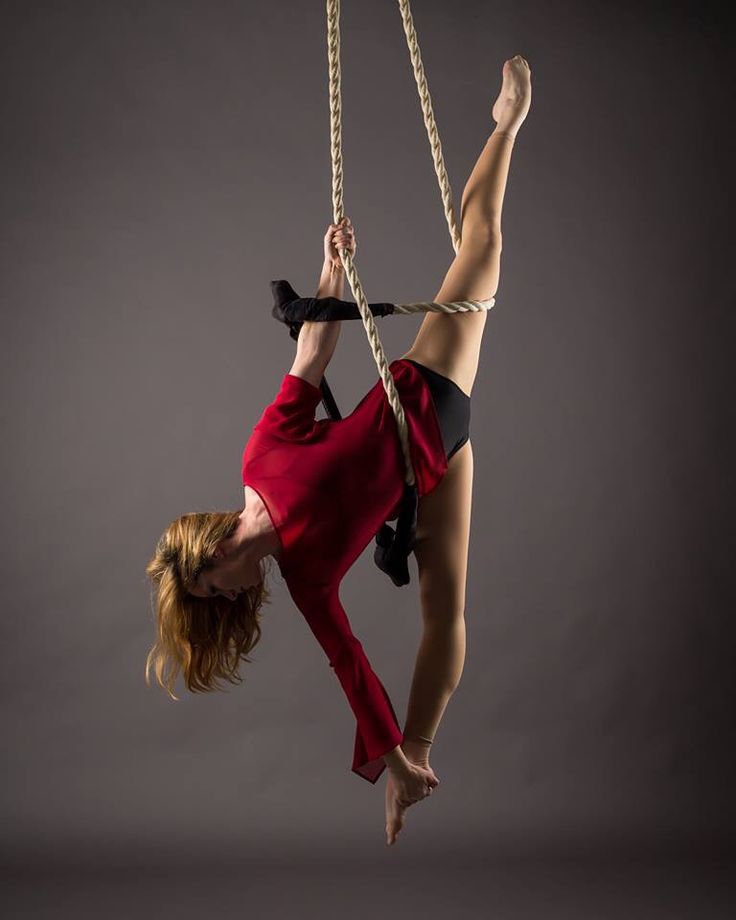
What you experience as a pole burn is actually friction burn then you are one of 2 types of people in this equation 1.
your skin is really sensitive or 2.
(Normal) excessive contact with the stripper pole with your skin from constant rubbing in one spot.
This excessive rubbing will translate to heat and irritation of the skin and then shows up as an ugly red mark on your skin, sound familiar?
But dont worry this is completely normal to suffer from the like of pole burn when pole dancing and you will develop a resistance/immunity to it as you got more experience on the pole.
The Solution to Nasty Pole Burn Symptoms
If you want to manage the pain associated with pole burn, then you need to pay attention to two important things like how you are moving on the pole and how you can reduce the amount of friction.
There is no easy way to do this as it comes part in parcel with learning the ropes of pole dancing.
Reduce friction
The first tip is the reduction of friction, and this will require you to be careful when practicing and using the pole when you are training.
For example, if you want to do spins, you need to make sure that your skin is dry and not moist or wet, since any extra moisture (such as sweat) on the skin will facilitate rubbing friction similar the chafe between your legs when walking.
In kind of friction from wetness will result in pole burn.
If you are the kind of person who sweats a lot and (completely normal in pole dancing) but you should wipe body parts that are going to be in contact with the pole.
If you that doesn’t work well and you are constantly bothered by the rubbing then pole dancing grip products available in the market like the Mighty Grip and Tite Grip is your best alternative and is used by athletes for these types of applications.
Excessive Sweating
I have a confession to make – I sweat a lot! more than your average person and its not fun, with or without pole dancing…
I have found products like Tite Grip works very well and acts as an antiperspirant which can be used on your hands legs and arms and even shoulders.
If you are doing shoulder plant moves, Basically if you have problems with sweating then get some of this stuff.
If you are doing tricky dance moves and complicated elements that require a strong grip when you are doing a standard reverse should plant a superman or sit on the pole then it’s required to strengthen certain muscle groups for the most amount of grip without sliding and causing that friction we all hate.
At the end of the day if you have good control and strong muscles then you are OK.
But if you are finding it difficult to hold yourself up on the pole then you are going to have a bad time with pole burn, you pay dearly if your muscles are weak.
But you can always train them to be stronger which brings me to my next point…
Where do you see yourself in pole dancing in 3 – 5 years?
Sounds serious right?
But if you are not honest with where you see yourself in 3 – 5 years of pole dancing then its hard to say how dedicated you are in improving and getting better.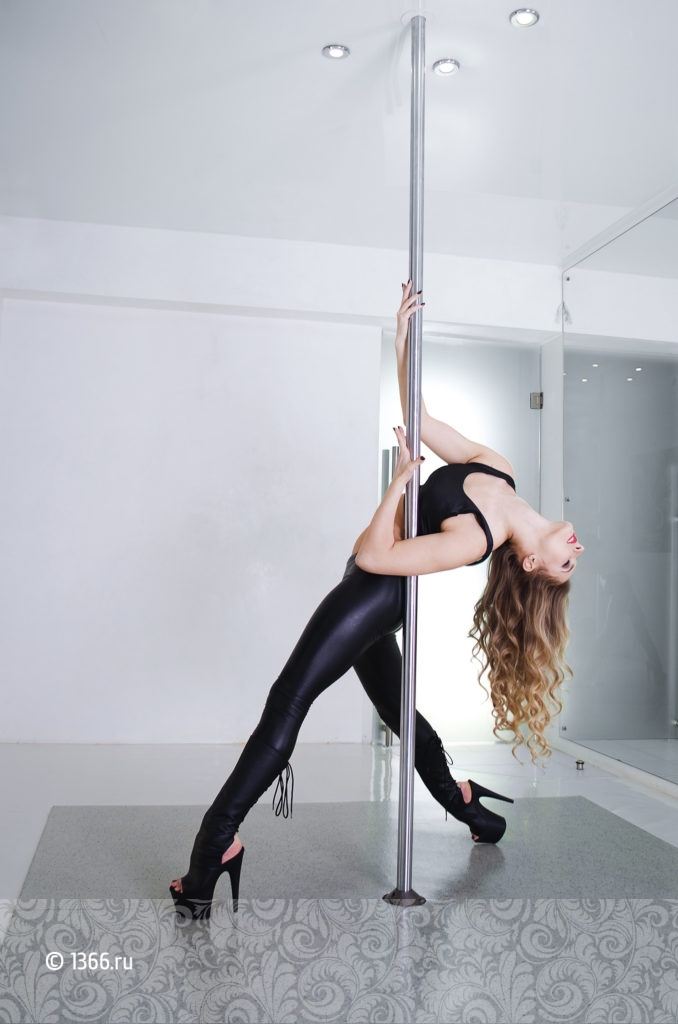
Pole dancing it not only fitness but an art form of sorts that incorporates dancing which looks amazing, however getting better at your pole moves requires that you train, train and train to get better.
If you are weak in your arms then its time to pick up those barbells baby and do some strength training on those guns 🙂
Most people who try pole dancing for the first 6 months quit because of the pain of pole burn and muscle weaknesses that are part in parcel with the sport.
Learn how to toughen your skin
Another way to address pole burn is to toughen your skin and this comes from training, training and training.
There is no easier way but practicing your moves on a regular basis so you can build the resistance to that burning sensation – just like guitarists who at first will suffer from bleeding fingers but will eventually build up callus from playing.
Same with pole – If you are practicing and building your skin’s resistance to pain then your are already on your way, you can speed up the healing process by using ice at the end of each training helps reduce the inflammation of the skin if you have some frozen veggies, berries or meat in the fridge then use that, but make sure you don’t get frostbite!
Plus-Sized
I often get this question a lot from plus-sized girls and help with pole burn and this circles back to strength and resistance.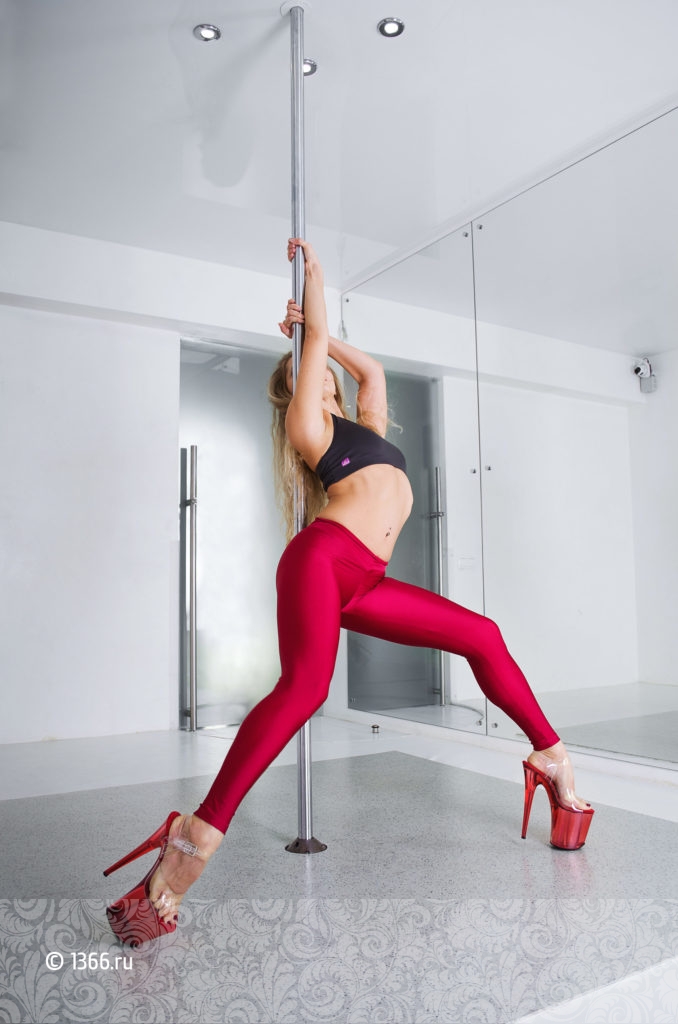
If you are strong and have control then you can use this to your advantage with a combination of using products like tit grip as a grip aid.
Final Thoughts on preventing the unyielding friction burn
So as a way of summarizing this post in a TL;DL version, it would be this:
- What it pole burn?: Its friction of the skin and it sucks
- How to stop it: Build a resistance by training and building your strength, work on your weaker muscles that require you hold yourself on the pole.
- If you Sweat a lot!: Like me I have genes that make me sweat but its normal, I use products like Tite Grip grip aids to help me with that issue.
- Understanding your goals: if you are not constantly training then you will find it much harder to build a resistance to pole burn, however if you love this sport then you will have no issues working on what needs to be worked on like your muscles and your tolerance levels.
Plus: we have products to help us 🙂
Remember these tips and suggestions will not work for everyone, If you have skin conditions or anything else related then this can be a set back and i would recommend consulting your doctor first before applying grip products or undertaking strength training if your body doesn’t allow it.
Why pole dancing is an art
Most people associate pole dancing with striptease, and those who practice it seem to be insidious seductresses. A reader of Gazeta.Ru realized from her own experience that it is difficult to dance on the pole, and there is nothing indecent in it. Understood and shared with us.
I've been in pole dancing for almost three and a half years, and during all this time some people are very persistently striving to prove that it is possible and necessary to put an equal sign between my hobby and striptease. Before, of course, this hurt me, but then I realized: most people know about pole dancing only that a pole (pole) is used for it. And what do they associate with the sixth? That's right, striptease.
Very unpleasant comments appeared under my photos on social networks more than once, because the stereotypical idea that half-dancers are completely debauched is still quite common. But, it would seem, pole dance has long come out of the shadows and has become one of the sports (officially - since October 2, 2017).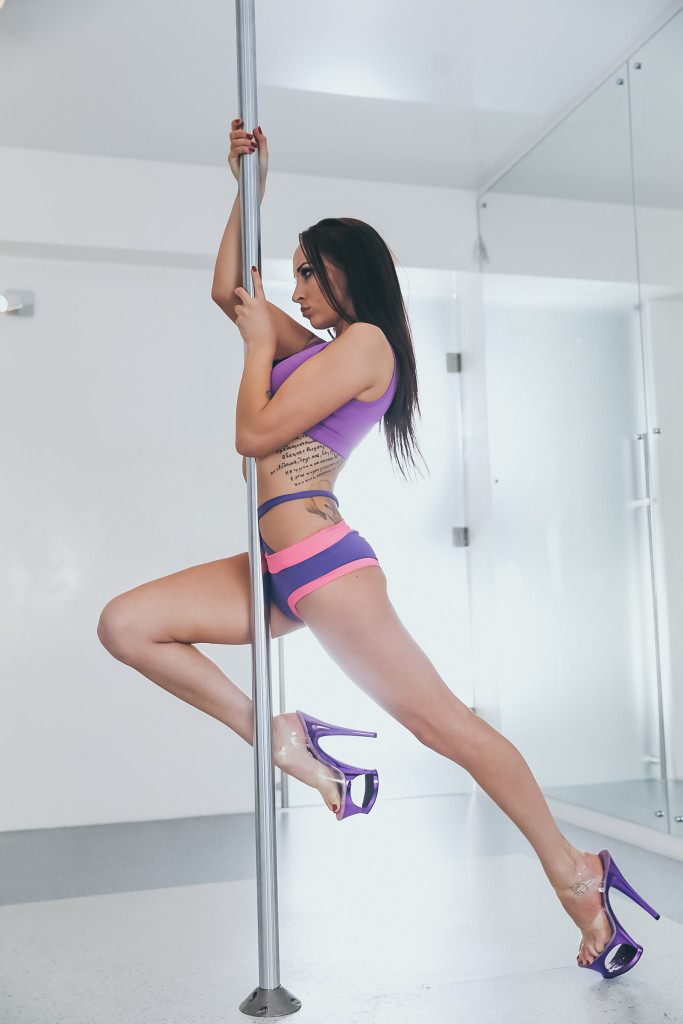
I always knew that half-dance is a dance, and dancing is an art. And I have always been fascinated by dancing. When I saw what half-dancers were doing, I decided that I wanted to do that too.
It took about a year for my “want” to turn into “do”. There were some fears and doubts, which, by the way, were also among other newcomers with whom I talked. Basically, they were formulated in the form of the phrase “I can’t, I have weak arms, weak abdominal muscles, not a good enough figure, and in general, am I an acrobat or something?” Doubts disappeared when I saw Olga Koda's number. Then the idea that in any case everyone starts somewhere took over, and I began to act: I found a school near my house, came to a trial lesson, all such a small and trembling schoolgirl, enthusiastically looking at experienced dancers who performed crazy tricks somewhere under the ceiling of the hall.
At the first lesson, all I did was walk around the pole and try to master the basic elements, for which my level of physical fitness was clearly not enough.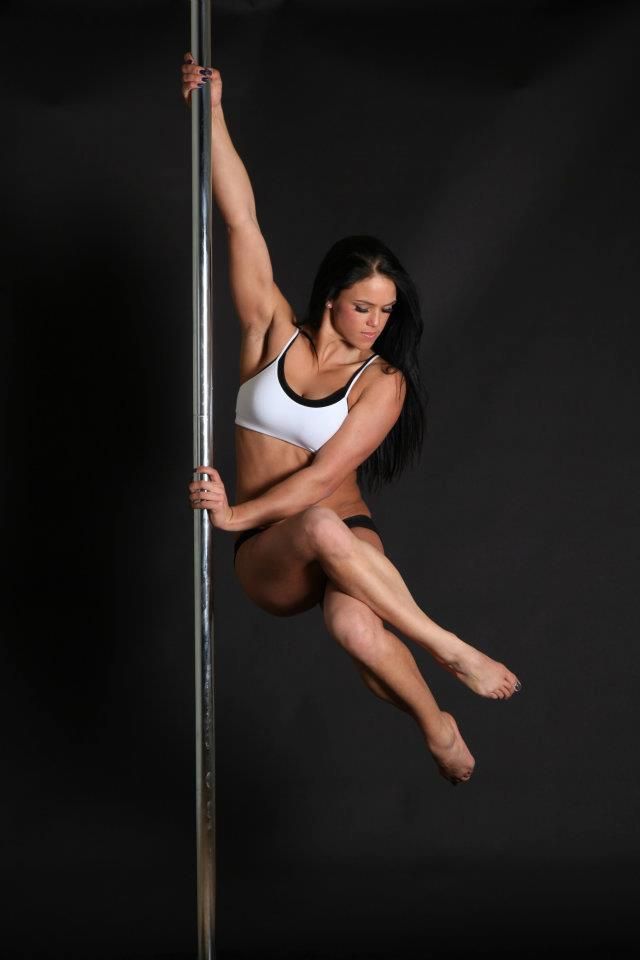 But I didn’t quit - I wanted to surprise myself too much and find out what I was capable of. I must say I was surprised. Sometimes we can’t even imagine what our body is capable of. I thought that hangings and handstands were for the elite. Now I understand that this is the lot of those who train hard.
But I didn’t quit - I wanted to surprise myself too much and find out what I was capable of. I must say I was surprised. Sometimes we can’t even imagine what our body is capable of. I thought that hangings and handstands were for the elite. Now I understand that this is the lot of those who train hard.
A couple of months later I climbed the pylon without any problems. Under the very ceiling, that was joy! Six months later I learned the basic tricks. And to those who say that pole dance is simple, “walk around the pole and slowly take off your clothes,” I answer: you are wrong (I would have put it much sharper before).
First of all, pole dancing does not involve stripping. Exposure of some parts of the body (arms, legs, back) is allowed solely in order to improve grip with the pole. In other words, in ordinary clothes, you will simply slide down a smooth steel stick and hurt yourself.
But dancers don't wear shorts, tank tops or leotards to seduce anyone.
Moreover, the rules of various competitions are strictly regulated: how much exposure is allowed, what kind of suit can and cannot be worn, what width the gusset of shorts should be, etc.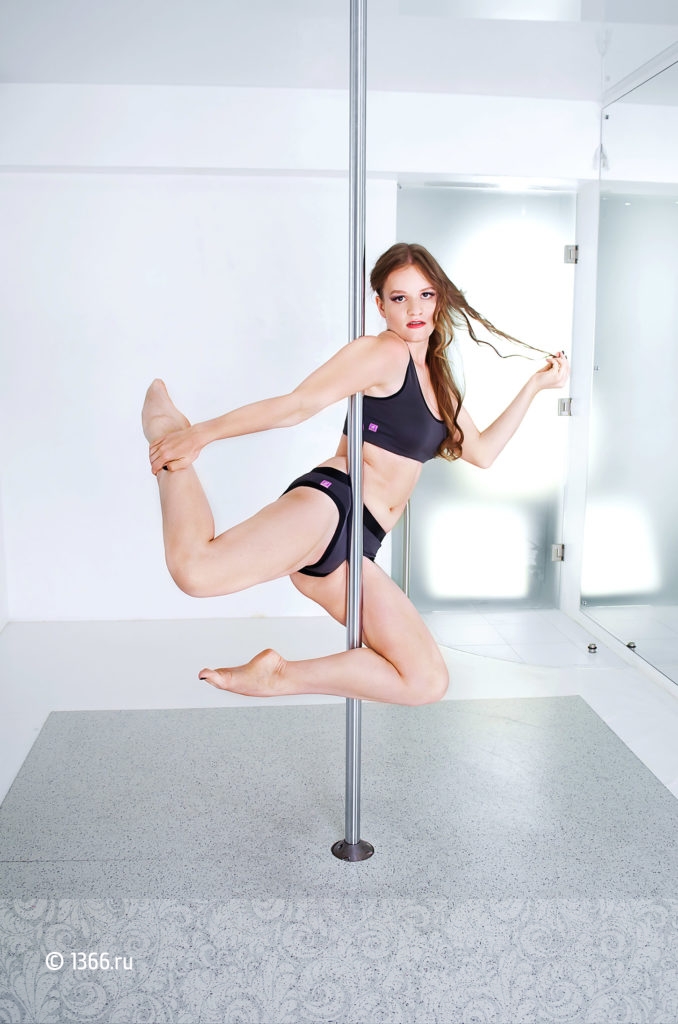 Yes, there is a separate direction in half-dance - pole exotic - it’s not the tricks that come to the fore, but the choreography, grace, sensuality. However, total nudity during performances is prohibited, which many do not know.
Yes, there is a separate direction in half-dance - pole exotic - it’s not the tricks that come to the fore, but the choreography, grace, sensuality. However, total nudity during performances is prohibited, which many do not know.
In general, there are many things in the history of pole dance that people who are not related to this area have hardly heard about. For example, that originally a pole, though wooden, was used by the Indians as a yoga equipment (XII century), and this discipline was called Mallakhamb (“pole gymnasts”). There was another one, which is more reminiscent of modern pole dancing, - Mallastambha ("pillar gymnasts"). The iron pole was used for Indian fighters to train their strength and agility. Some sources report that the pylon or pole was used in their ritual dances by women in African and Indian tribes. Previously, he embodied the symbol of the masculine, but then the dances at the pole also had a spiritual aspect.
For several centuries, half-dance developed only in the circus arena (it still exists today). In the second half of the 20th century, the "function" of pole dancing was seduction. Since the 1990s, the pole dance that we see now has appeared, and this is the merit of the Canadian Fonnier Munday, who recorded educational videos, thanks to which the society learned about this dance direction.
In the second half of the 20th century, the "function" of pole dancing was seduction. Since the 1990s, the pole dance that we see now has appeared, and this is the merit of the Canadian Fonnier Munday, who recorded educational videos, thanks to which the society learned about this dance direction.
Those who think that half-dance is a sport exclusively for girls are mistaken.
Older women (Greta Pontarelli known in this circle for more than 60 years), and men (winner of the World Championship in Beijing 2015 Dmitry Politov, three-time world and Russian champion Evgeny Greshilov) and even children (Emily Moskalenko) represent the dance direction. Most half-dancers say: the main thing is not age (gender, profession), the main thing is desire.
In Russia and in the world, performances are very actively carried out in order to develop the sport and improve it; there are local and international organizations that pay attention to the promotion of dance, acrobatic and sports disciplines on the pylon, and the fact that pole dancers seek to undermine the morality of society with their activities, and now it’s somehow strange to think. Once I was lucky enough to talk with one of the most famous pole dancers, the 2012 world champion Anastasia Skukhtorova, who admitted that she doesn’t even try to convince the others what is the difference between her favorite hobby and striptease: “In general, I heard that my videos are often show that people themselves understand the difference. And it's very nice."
Once I was lucky enough to talk with one of the most famous pole dancers, the 2012 world champion Anastasia Skukhtorova, who admitted that she doesn’t even try to convince the others what is the difference between her favorite hobby and striptease: “In general, I heard that my videos are often show that people themselves understand the difference. And it's very nice."
What is Pole Dance and how to start dancing
Pole Dance is a harmonious dance performed on a metal pole (pylon). It combines elements of acrobatics, choreography and gymnastics. This direction does not need strong physical training, all the required skills and abilities are given during constant training. It is often confused with striptease and pole dancing, but in reality there is nothing in common between them.
Greetings, dear readers. If you are here, then you have the opportunity right now to learn about such a dance as Pole Dance. Classes on the pylon attract modern girls and women, draw them in and fall in love with themselves.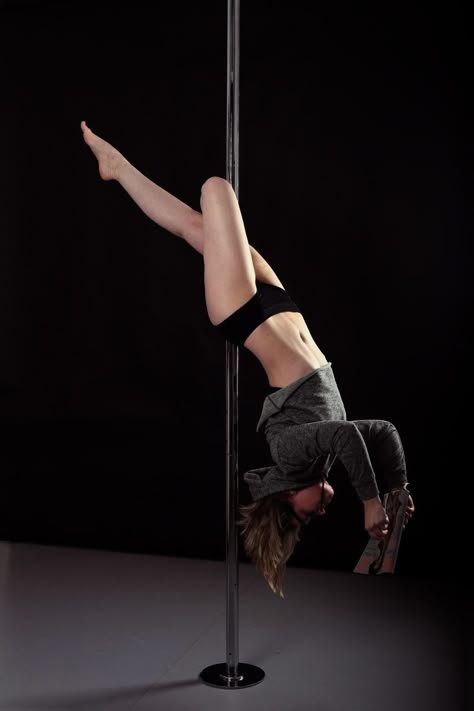 The multifaceted Pole Dance gives meaning and fulfillment over time, a thirst for achieving new goals. It gives fans more and more opportunities to develop themselves, to be more attractive and stronger.
The multifaceted Pole Dance gives meaning and fulfillment over time, a thirst for achieving new goals. It gives fans more and more opportunities to develop themselves, to be more attractive and stronger.
What is Pole Dance?
In pole dance, a pole or pylon serves as the main working element, a sports equipment on which various tricks are performed. In striptease, a metal pole is a decorative detail, the stripper dances next to it, doing simple dance moves - no complicated tricks are performed here.
Pole Dance is a physically difficult pole dance that can be safely attributed to a power sport. Young girls, women of different ages and even children can do it. By the way, men can also practice on the pylon, perform power elements of increased complexity.
Standard Pole Training
As a rule, Pole Dance classes for beginners begin with a warm-up to prevent sprains and all sorts of injuries. A good start makes pole training safe and effective, prepares the ligaments and muscles for loads and twists.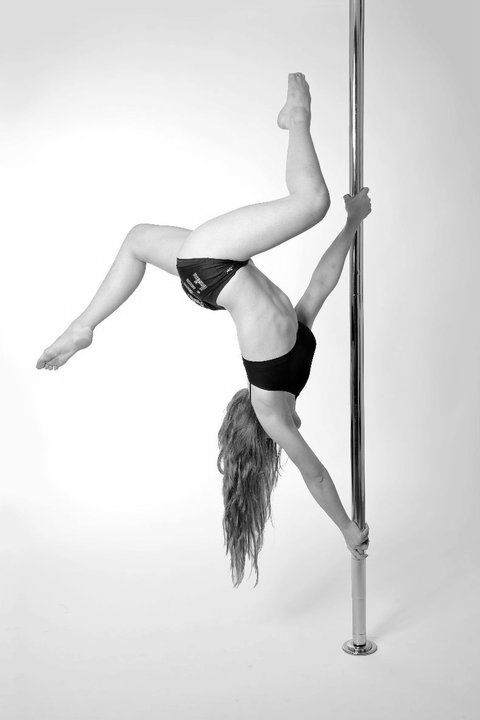 Then it is allowed to start performing simple elements of the dance. When the body is well warmed up, stretching is done (static and dynamic).
Then it is allowed to start performing simple elements of the dance. When the body is well warmed up, stretching is done (static and dynamic).
Flexibility is important for performing the main number of elements on the pole, so stretching is in every workout, after warming up and at the end of the session. A force load is placed on the prepared body. A lot of energy is wasted here. To perform heavy tricks in pole dance, the use of a mat is provided. After a power load, the trainer does stretching and a hitch.
Tips for pole dance beginners
Pylons for training are dynamic, which are spinning, and static. There is an erroneous opinion that it is better for beginners to practice on a spinning pylon. Beginning dancers are advised to start doing dance elements on a static pole. It may be more difficult, but it’s faster to make progress, get stronger and develop a muscular corset. The issue of choosing clothes for pole dance for practicing on the pylon is also of interest to beginners.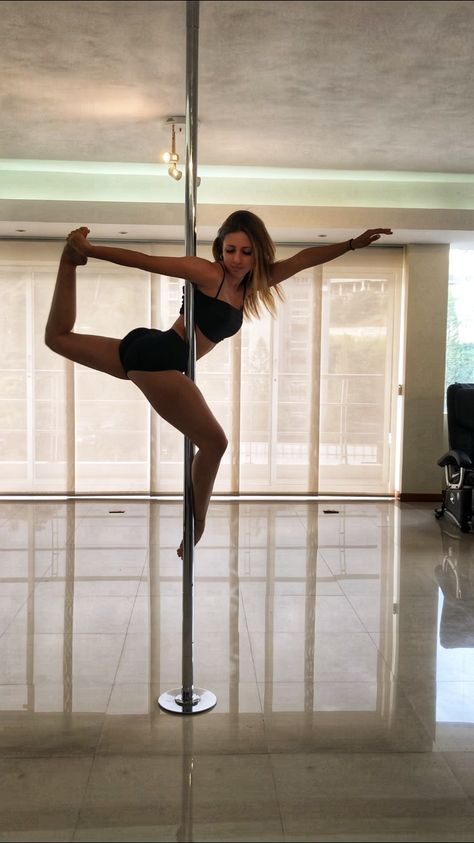 Everything is pretty simple here. For the first workout, you don’t need high-heeled shoes and expensive uniforms. Initially, a t-shirt, shorts and socks are enough.
Everything is pretty simple here. For the first workout, you don’t need high-heeled shoes and expensive uniforms. Initially, a t-shirt, shorts and socks are enough.
In the future, you can decide for yourself what you want to wear for training in Pole Dance. For the first lesson, it is not at all necessary to bring magnesia (liquid chalk to improve grip with the pole) or gloves. Just try to come to the lessons for beginners and in practice understand whether special tools are needed or not. When hands are held tight without anything, gloves and magnesia are not needed. In addition, the coach will tell you what would be the best option in a particular case.
A big problem for beginners is bruising. Without them, the first workouts are unlikely to do. It will take some time to put up with them. To alleviate the condition and quickly improve the appearance of the body, you can use special ointments, such as lifeguard 911, troxevasin, badyaga. Time and patience will help in the fight against bruises.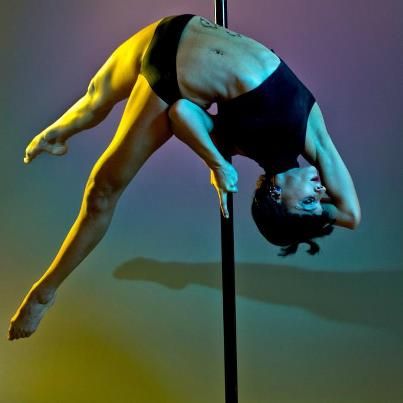
IMPORTANT! Before starting pole lessons, it is important to check your health condition. There are a number of diseases, due to which the doctor may prevent you from training. That is, you need to consult a specialist, especially if you already have any health problems.
Varieties of Pole Dance
Today there are three main directions of Pole Dance:
- Exotic. Here, the emphasis is on strength elements in a percentage ratio of approximately 70 to 30. In addition, the bulk of the dance movements are performed on the floor. This kind of pole dance is characterized by plasticity and eroticism. At the same time, there is no undressing in the exotic.
- Art. The direction is characterized by a harmonious combination of power elements and choreography. The emphasis is on the technique of performance, the quality of tricks, and the outfit of the performer. The classical understanding of the direction is pole dance as an art.
- Sport/Fitness.
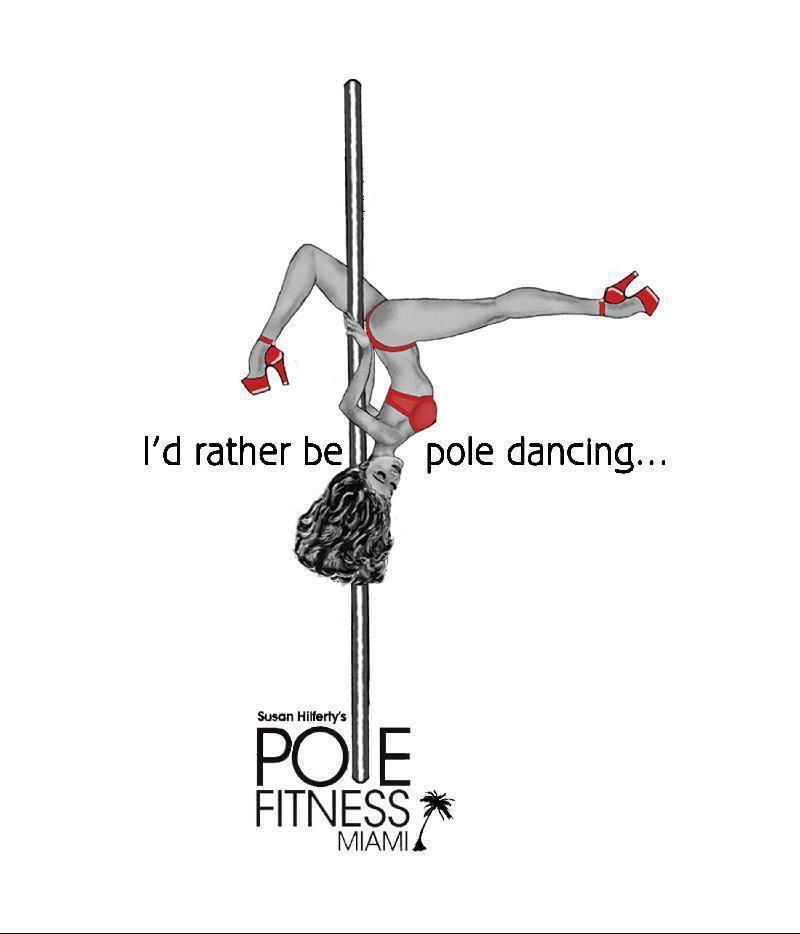 The most difficult variety of Pole Dance. In the performance of the pole dance, approximately 70% of the complexity and quality is given.
The most difficult variety of Pole Dance. In the performance of the pole dance, approximately 70% of the complexity and quality is given.
Why should everyone try the pole?
Paul Dance makes you constantly work on yourself, your body, hone your own skills, fight fear and pain. This can hardly be called a disadvantage of this type of dance, since there is a goal, work and victories.
In training, music and movements allow you to relax, relieve negativity and nervous tension. On the pylon you become more graceful, stronger and more flexible, and also much more confident in yourself. Pole Dance is the art of controlling your own body, which always needs care and love. This is lightness and endurance, a slender figure, which you get as a reward for perseverance and work in training. By the way, the successful half-dancer Anna Eliseeva agrees with this.
Pole sport is a combination of useful and pleasant. This projectile serves as a simulator that allows you to keep your body in good shape, lose weight, and build muscle strength.